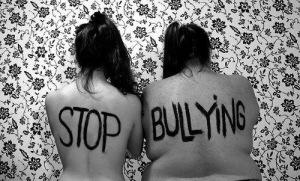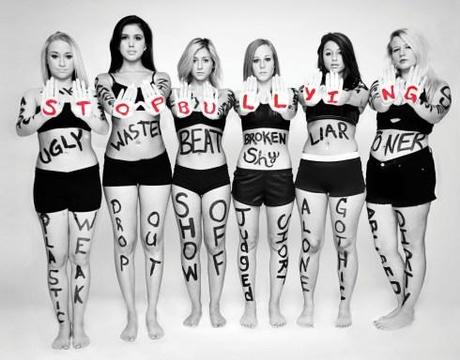When I was 12 years old, I had to change schools after being bullied.
The emotional and verbal attacks spanned the better part of a year; kids who used to be my friends suddenly refused to sit with me, made fun of my appearance and said unkind things about my family. I think it hurt my parents more than it hurt me although, almost 20 years on, I still remember it.
But at 3pm each day respite rolled around; school was done for the day and I’d be wrapped up in the cocoon of my family.
These days there seems to be little respite for victims; mobile phones, social media and the Internet give bullies greater access to their targets.
In fact, one-in-four Australian children report they have been cyber-bullied.
According to a 2008 Microsoft/Galaxy Research study, cyber-bullying is more prevalent in older children with 31 per cent of 14-17 year olds reporting that they have been cyber-bullied compared to 21 percent of 10-13 year olds.
But bullying doesn’t just happen to children.
Bullying is repeated verbal, physical, social or psychological behaviour that is harmful and involves the misuse of power by an individual or group towards one or more persons.
Last year I found myself the target of another person’s anger when I was cyber-bullied.
The perpetrator was a woman in her 30s, with a university education and a well-respected job. A wife and mother.
While most people think bullying only happens in the playground, the reality is that every day men and women across Australia are being bullied—in their homes, workplaces and online.
It has come out of the schoolyard and is infiltrating our everyday lives.
Former model and TV personality Charlotte Dawson last year proved it’s not just young and ‘uncool’ people being harassed online. While Dawson was attacked by ‘cyber trolls’ hiding behind anonymous accounts, others are harassed by people they know.
We have all watched in horror as heartbroken parents fight back tears to talk about the tragic suicide of their children; young people who could see no end to the constant ridicule, harassment and bullying than to end their lives.
These families beg for more to be done to stop these problems from escalating beyond the point of no return. But how do you solve a problem when more and more we are seeing similar attacks being instigated by adults?
As I mentioned, last year I received a hate-filled rant by email. It was unexpected and it was brutal.
For two pages the author attacked my character and then she dragged other people into it, claiming they all felt the same way about me. It was like Grade Seven all over again—only super-sized and with an extra side of venom.
I yelled. I cried. I swore.
I wanted to send back some home truths but in the end I settled for five simple words: Don’t ever contact me again.
I left work immediately and headed straight for my parents’ house; despite being only 40 minutes away, it was one of the longest drives of my life.
It didn’t matter that the email was no longer in front of me, all that venom and hatred swirled around in my head; line after line about what a worthless person I was.
In that moment, I could understand why young people who are bullied online often take drastic measures to end their pain.
Seeing hurtful and derogatory remarks about yourself, whether true or not, repeated over and over in writing seems to be so much worse than spoken words which seem to soften over time.
But when something is in writing, it’s there to haunt you and you can’t help but re-read it.
Young people often don’t have many of the coping mechanisms adults do and most will admit to hiding their feelings so as to not let others day. Some even think that receiving angry, threatening or hurtful messages happens to everyone. It doesn’t. Or it shouldn’t.
Even as adults we can’t always deal with the stress which comes with being the victim of bullying.
A few days after I received the email, I asked a psychiatrist about what I should do with it. He told me to delete it from my email and burn any hard copies.
He explained that while the letter was aimed at me, it was about really her; her problems, her insecurities, her hurt. I was just her punching bag.
I understood his reasoning, but how do you explain that to a 12-year-old?
I took the doctor’s advice—the email is gone and I rarely think about it or the author until I see other people suffering from bullying.
I was fortunate that the damage was minimised thanks to the support of my family and friends.
I can only imagine how other people—young and old—cope with a constant campaign against them; it’s hard to take stand against people who are focused on bringing you down but it can be done.
“When people hurt you over and over, think of them like sand paper. They may scratch and hurt you a bit, but in the end, you end up polished and they end up useless.”
—Chris Colfer—
I was prompted to write this post after hearing people share their experiences of bullying as part of Brisbane radio station 97.3fm, Channel 9 and The Courier Mail’s 2013 Say No To Bullying Day Week and the National Day of Action Against Bullying and Violence on 15 March.
To find out more about the National Day of Action Against Bullying and Violence, visit bullyingnoway.gov.au.
Spread the message #SayNoToBullying.
For tips on how to protect your children in cyberspace, visit click here, or here.

This image was created by 18-year-old high school student Mary Anne Marcondes. She chose pretty girls “because people don’t expect they will be hurt by all the negative things that are said”.
